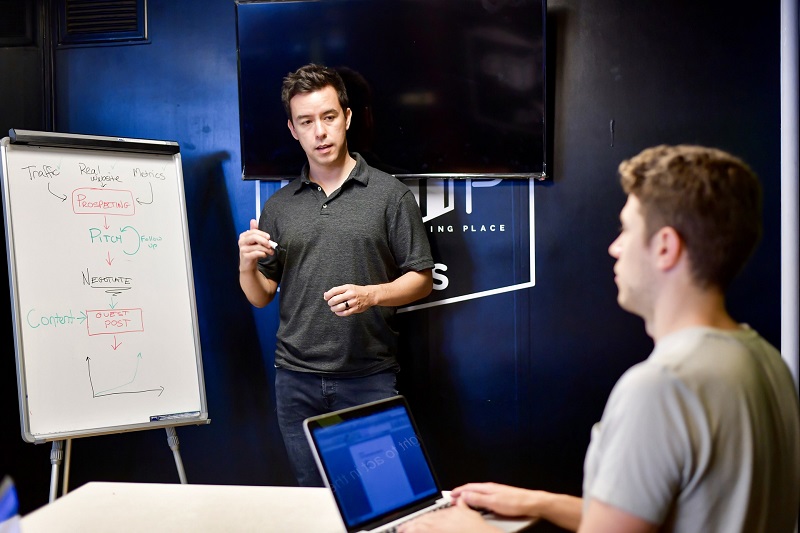Which software development lifecycle approach is most compatible with devsecops?
a) Agile
b) Waterfall
c) Model-driven development
d) Model-driven Architecture
The answer is A which is Agile.
What Is Agile Methodology?
The fundamental goals of agile development are adaptability and a rapid response to change. It distributes individual product features rather than the entire software all at once, which makes it easier to accommodate the customer’s specific demands. In business environments that are prone to change or uncertainty, agile technology is an excellent choice. This adaptable model includes simultaneous testing and development, which ultimately results in an improved product’s overall quality. It requires self-organization and gives each member of the team the opportunity to take on different responsibilities. The agile methodology encourages continuous collaboration between the development teams, the customers, and any other stakeholders who are involved. Every project is broken up into a series of smaller iterations that can be finished more quickly as a result.
This feedback-oriented approach gives businesses the ability to increase the level of customer satisfaction they achieve by delivering high-value solutions within the allotted amount of time.
What Is Agile Software Development Life Cycle?
71% of companies have already implemented Agile technology in their operations. Because Agile principles were applied to the process of developing software, software developers have been able to increase their productivity and deliver results that are more satisfying. The agile SDLC is a process that gives developers the ability to quickly produce software that satisfies the requirements of the client and stays within the budget that was originally estimated. The agile software development life cycle places an emphasis on collaboration and enables members of a team to freely share feedback and comments regarding tasks. Every activity has a predetermined amount of time allotted for it, which makes it easier for everyone to meet their commitments and increases their level of efficiency.
The traditional, step-by-step method of software development is replaced with the significantly more adaptable Agile SDLC. It entails soliciting consistent feedback from customers in an effort to enhance the product’s overall quality. The agile software development life cycle (SDLC) divides the overall process of software development into several shorter cycles called sprints. The development of software is accelerated and made more flexible as a result of these sprints.
According to the Agile Manifesto, the Agile Software Development Life Cycle (SDLC) is based on the following core values:
- Individual exchanges are prioritised over the use of processes and instruments.
- A greater emphasis on operational software rather than documentation
- Cooperation in the process of negotiating contracts
- Adjusting Oneself to Change
After each sprint, the customers are asked for their feedback, and this provides the team with the opportunity to work on improving any areas that fall short of the client’s expectations.
The fundamental principles of Agile development
They had no idea how quickly their concepts would catch on outside of their field when 17 software developers got together almost 20 years ago and devised a new method of creating software. The Agile development model is what it is today because it adheres to these principles of incremental software development.
- The prompt and consistent delivery of useful software is essential to achieving the goal of maximising happy customers as quickly as possible.
- Alterations to agile processes are used to give customers an advantage over rivals in a competitive market.
- It is still possible to modify the requirements even later in the development process.
- There is a preference for quicker delivery times, which for fully functional software can range from a few weeks to a few months. The most significant measure of how far we have come is this.
- Throughout the duration of the project, daily communication between employers and developers is required.
- People who are motivated to create projects do so when they are in the appropriate environment and have the necessary support.
- Teams that are able to organise themselves produce the most effective requirements, architectures, and designs.
- Face-to-face communication is the most efficient way to convey information to members of the development team as well as other members of the development team.
- The group ought to routinely go over their performance metrics and then tune and adjust their performance in accordance with those metrics.
- Agile methodologies aid in sustainable development. Users, developers, and investors all need to move quickly.
- Maneuvrability is improved by a relentless pursuit of technical excellence and flawless design.
- The ability to maximise the amount of work in progress through simplicity is crucial.
Advantages of Agile SDLC
- Iterations for the project are brief and transparent.
- It is a process that is adaptable to change.
- It reduces the amount of risk involved in developing software.
- Rapid dissemination of the initial version of the product.
- The development process takes into account whether or not the functional requirement is correct.
- The customer is able to observe the end result and determine for themselves whether or not they are pleased with it.
Disadvantages of Agile SDLC
- The development team ought to maintain a high level of professionalism and put the needs of the customer first.
- A new requirement might cause a conflict with the architecture that is already in place.
- If additional changes and corrections are made, there is a possibility that the project’s duration will extend beyond what was originally estimated.
- It might be challenging to give a precise estimate of the project’s overall cost due to the ongoing iteration.
- There is no clear requirement.
References
Miller, D. (2022, February 15). Agile SDLC (Ultimate Guide 2022). ProProfs Project Blog. https://www.proprofsproject.com/blog/agile-software-development-life-cycle/
Dziuba, A. (2022, May 20). Agile Software Development Lifecycle Phases Explained. Relevant Software. https://relevant.software/blog/agile-software-development-lifecycle-phases-explained/
Agile SDLC – Javatpoint. (n.d.). www.javatpoint.com. https://www.javatpoint.com/agile-sdlc
